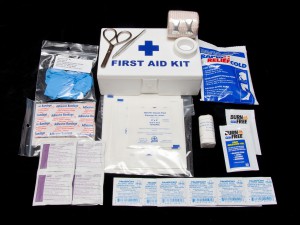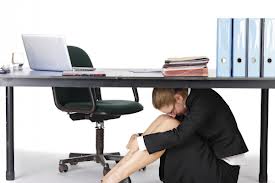Blog
Although we originally posted this blog in 2014, we thought it was prudent to re-post in light of the earthquake near Christmas 2015.
Each year it seems we all rotate the same resolutions in order to achieve a longer life: eat healthier, exercise more or quit a bad habit. All of these changes are controllable throughout the whole year, but what about unexpected events that can threaten your life? Unfortunately many people don’t think about emergency preparedness until they hear about a disaster that has happened somewhere else.
What if the disaster hits closer to home? Are you and your family prepared? Do you have an emergency plan?
Instead of recycling those usual and tired resolutions, this year make a resolution for you and your family to be safe. To help you out we at SOS Emergency Response Technologies have come up with 3 quick and easy steps to achieve this goal, so you can sit back and boast to your friends that you accomplished your resolutions for the year.
Step one – Check the batteries in your smoke detector.
Step two – Check your first aid kits. Take a look and see if any products are expired and need to be replaced. If you don’t have a first aid kit we recommend our General Purpose First Aid Kit FK1021 $14.95.

Step three – Check your emergency preparedness kit and update your emergency plan/contacts if needed. If you use bottles of water they have to be replaced yearly. Emergency Food Ration Bars and Emergency Sterile Water Packets last longer (5 years). Double check your contact lists to make sure it is up to date with current information and remind your family about the emergency plan you put in place. If you don’t have an emergency plan there are many sources on the internet. These days we find ourselves working and running errands at all hours of the day so the chances of your family being split up when a disaster hits are larger. Make sure you set a meeting point.
If you don’t have an emergency preparedness kit SOS Emergency Response Technologies has a variety of options to choose from. We have kits for 1, 2 and 4 person families and have economical versions as well.

That’s all there is to it! Although, there are a few extra steps you could take to make sure those around you are safe as well. Ask the human resources team if your workplace has an emergency plan as well as emergency kits. If you are on the safety committee make a point to bring it up at the next meeting and set up an emergency plan for your work place. SOS Emergency Response Technologies can also provide emergency preparedness kits and products for your workplace.

Blog
Jackie Kloosterboer has been teaching people how to prepare for earthquakes for close to 2 decades. She is the author of My Earthquake Preparedness Guide – Simple Steps to get You, Your Family and Pets Prepared. Follow Jackie on Twitter @Surviving_it to receive Earthquake Preparedness tips to help develop your Family’s Earthquake Plan.
| Nepal – Could we be next?The devastating Nepal earthquake claimed the lives of so many innocent men, women and children, injured thousands, devastated people’s livelihoods and then less than a month later another earthquake – absolutely unbelievable! What terrifies me is – like Nepal we too are overdue for an earthquake and so few of us are prepared. I can only imagine what it would be like on the West Coast in the aftermath of 2 major earthquakes. We need to look at Nepal as yet another wakeup call and start taking action to get ourselves, our families and pets prepared – we could be next! Look at your own family, how would an earthquake impact them? What if you are not together when it strikes – could they survive without you? What plans do you have to connect after an earthquake? What supplies have you got stored so you can better survive-it? If you are like most people, you have a few supplies tucked away in the back of the hall closet – but do you have enough to sustain you, your family and pets for a minimum of 3 days – a week is even better! The following 3 simple steps is a great place to start to better protect you, your family and pets in an earthquake:
Create your Family Meeting Places Family Meeting Places are pre-identified locations where your family will meet when unable to connect using regular methods of communication. Hopefully we are home together when facing an earthquake, but that may not be the case, we could be at work, they could be at soccer practice – we just don’t know. That is why you need to identify Family Meeting Places so you will have options to connect. The more options you have the better your chances of connecting with your family. Your first Family Meeting Place should be outside your home – if you need to evacuate quickly such as for a house fire this is where you and your family will meet. Across the street is good. If you evacuate through different doors you could be scattered and not know the safety of your family because you can’t locate them. This Family Meeting Place will help you connect much faster and you will know everyone is safe much quicker. Develop a second Family Meeting Places within walking distance of your home. If you must evacuate your home or you are not able to return home your family can meet there. A friend or family member who lives within walking distance works well. Once you have connected with your family you can then determine your next move. For those of you who work close together – identify a Family Meeting Place close to your work. If you cross bridges to get home you may find them closed after an earthquake. If you have a Family Meeting Place near your work you can meet your family who is in the same area and then determine if best to make your way home or stay in your current location. Look at your daily lives and identify if there are other Family Meeting Places you need to identify to help connect your family.
Designate Your Family’s Out of Area Contact When an earthquake strikes there are so many unknowns – will our internet be down, will we be able to text – will our cell phones work – until the earthquake happens we don’t know the answer. What we do know is – the more options you have available to connect with your family the better your chances will be of making that connection. In addition to your Family Meeting Places, an Out of Area contact provides another way for you to connect with your family. We know our home phones and cell phones will likely not be working after a significant earthquake, but often long distance will still work.
Simply identify someone who lives out of the province (preferably east of the Rockies) to be your family’s Out of Area Contact. When faced with an earthquake and cell phones and local phones lines are not working, you and your family members will know to call your Out of Area contact to provide your status and get updates on family members who have already called in.
A word of caution – we all put our contact numbers in our cell phones – but if power is out and you can’t charge your phone you won’t have access to your Out of Area contact number. Make sure you carry your Out of Area’s contact number in your wallet.
Know what to do when the earth starts moving Drop, Cover and Hold On – this must become second nature to all of us. When the earth starts moving we must immediately Drop, Cover and Hold On underneath a heavy table or desk or against an interior wall so we are better protected from falling and shooting objects. Once the shaking stops – slowly count to 60 then cautiously get out of your safe spot and check your surroundings. Check on family members and then identify what your next move will be. The above 3 steps are not difficult for you and your family to do and if this is all you do, you will better survive the earthquake. But don’t stop here – keep going and get those emergency kits and supplies your family will need and make your home and office safe so when the earth starts moving – you, your family and pets will be better protected. Once the earthquake hits it will be too late. You won’t be able to run out and get what you need. The time to do it is now. Remember – your family is counting on you! |
|
Blog

On October 17th, a locally-driven, world wide “Drop, Cover, and Hold On” drill will take place called The Great ShakeOut. All residents, agencies, businesses, and organizations across the world are encouraged to take part in the largest earthquake drill in history! Register here http://shakeoutbc.ca/
With this fantastic event only 2 weeks away, we thought it be a great time to share some earthquake safety steps with you:
Before the next big earthquake we recommend these steps that will make you, your family, or your workplace better prepared to survive and recover quickly:
- Secure your space – identify hazards, secure bookshelves and heavy furniture
- Plan to be safe – create a family emergency response plan, have a meeting place
- Organize emergency supplies – ensure you have enough emergency food and water for a minimum of 72hrs. It should be easy to carry in case you have to evacuate
- Minimize financial hardship – organize important documents; keep copies in an alternative location if possible
During the next big earthquake, and immediately after, is when your level of preparedness will make a difference in how you and others survive and can respond to emergencies:
- Drop, Cover & Hold – when the ground starts to shake
After the immediate threat of the earthquake has passed, your level of preparedness will determine your quality of life in the weeks and months that follow
- Ask for feedback on how the drill went.
- Schedule the next drill for one year later (or sooner).
- Share photos and stories at Share the ShakeOut.
- Encourage your staff to prepare at home

Blog
Some of my friends call me a pessimist….
I think I am a realistic, well-prepared person.
Should there ever be a major disaster, or a minor one for that matter, I know my family and I might be on our own for days – maybe even weeks. I want to BE PREPARED. But then again, I am the mom who always has the extra sunscreen, water, and snacks!
Most people say, ‘I’ll get my emergency kits tomorrow,’ and tomorrow never comes. But I think: What if it happens tonight? What if you put it off and you’re sitting with your family? You don’t want to sit there wishing you had listened to that inner voice do you?
You can put emergency preparedness kits in your home, car, office and more. But why run around trying to collect everything? Afterall, you are busy person.
For as little as $150 CAD a family of four can have a starter home kit:
- backpack (you need those hands free)
- 4 x 3600 calorie food bars (shelf life 5 years)
- 24 x sterile water packets (shelf life 5 years)
- 1 x pkg of 20 water purification tablets
- 1 x hand crank flashlight, radio & USB cell phone charger
- 4 x 12hr light sticks
- 4 x whistles
- 4 x ponchos
- 4 x rolls of toilet tissue
- 4 x dust masks
- 4 x solar blanket
- 1 x signal mirror
- 1 x pr safety glasses
- 1 x pr work gloves
- 1 x “Call Police” sign

Blog
RIGHT after an emergency, you may be confused or disoriented. Stay CALM.
HELP THE INJURED Help anyone who is injured. Get your emergency survival kit and your first aid kit.
LISTEN TO THE RADIO Listen to your local radio station for instructions. If you don’t already have a wind-up radio get one now. SOS has a great 4 in 1 wind-up radio and flashlight
DO NOT USE THE TELEPHONE Don’t use the telephone. Emergency crews will need all available lines.
CHECK YOUR HOME Check for damage to your home. Use a flashlight – do not use matches or turn on electrical switches if you suspect damage or smell gas. Check for fires, fire hazards or other household hazards. Sniff for gas leaks, starting at the water heater. If you smell gas, turn off the main valve, open windows and get everyone outside quickly. Shut off any other damaged utilities. Clean up spilled medicines and bleaches. Confine or secure your pets. Check on your neighbours, especially the elderly or people with disabilities.





